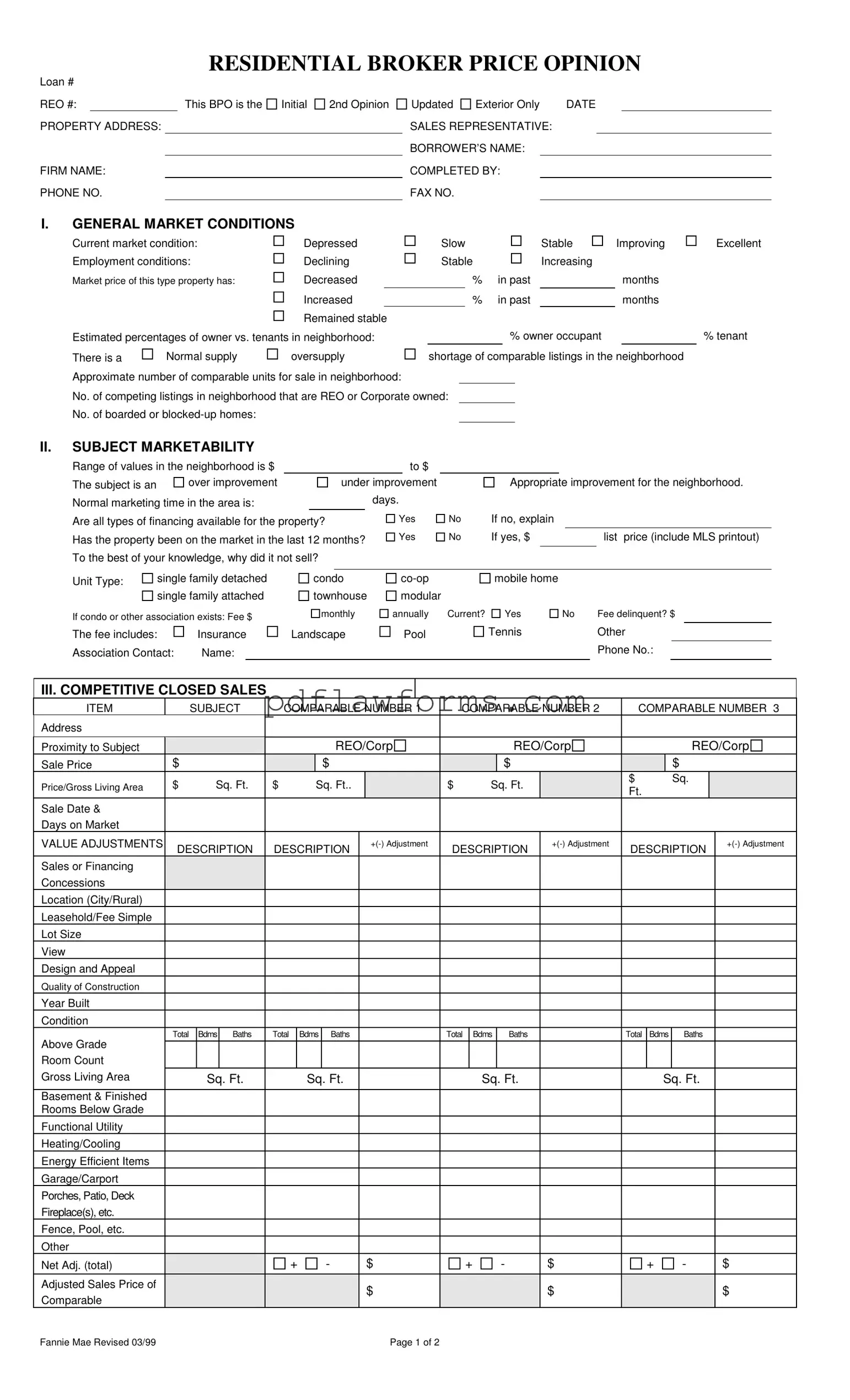The Broker Price Opinion (BPO) form plays a crucial role in real estate transactions, particularly for lenders and investors looking to assess property values. This comprehensive document captures essential details about the property, including its address, loan number, and the firm responsible for the evaluation. It provides insights into general market conditions, such as employment trends and the supply of comparable listings in the neighborhood. The form also evaluates the subject property's marketability, identifying whether it is over-improved, under-improved, or appropriately improved for its area. Additionally, it outlines competitive closed sales and listings, allowing for a comparison of similar properties. The BPO concludes with a suggested market value and list price, taking into account necessary repairs and marketing strategies. This assessment not only helps in determining a fair price but also guides potential buyers and sellers in their decision-making process.
